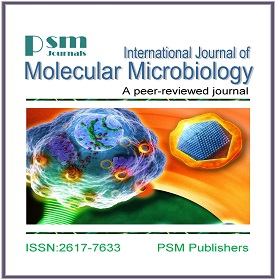Trichoderma: a Potential Biocontrol Agent for Soilborne Fungal Pathogens
Abstract
EDITORIAL
Plants are susceptible to diseases with far-reaching economic implications. Infections with phytopathogenic fungi are among the most worrying of these diseases as it may result in significant crop yield losses. Some of the fungi produce potentially toxic compounds which can be harmful to human beings if they are ingested via consumption of contaminated food (Ferre, 2016; Suprapta, 2012). The soil is a rich collection of organisms which have multifaceted roles in the ecological dynamics (Siyar et al., 2019). The growing concern about the hazards involved relating to human health and environmental contamination has led to a demand for the development of alternatives to control plant diseases (Alsohiby et al., 2016; Iqbal and Ashraf, 2017).
In general, the control of fungal phytopathogens is achieved by applying synthetic fungicides. However, their use has led to problems for the environment and human and animal health (Nunes, 2012), as well as fear-mongering by some opponents of pesticides, has led to considerable changes in people’s attitudes towards the use of pesticides in agriculture. The growing concern about the hazards involved relating to human health and environmental contamination has led to a demand for the development of alternatives to control plant diseases (Carmona-Hernandez et al., 2019).
One of the major challenges encountered during the selection of biocontrol agents is that biocontrol agents that appear efficacious based on in vitro experiments might not be effective in controlling plant diseases in greenhouse or field conditions. The appropriate application method is likely to contribute significantly to the success of the biocontrol agents in the field trials (Suprapta, 2012).
In this issue, (Al-Mekhlafi et al., 2019) investigate the antagonistic potential of native Trichoderma species against tomato fungal pathogens. Results showed that antagonistic potential of Trichoderma isolates varied significantly which inhibited the growth of the pathogen isolates at varying degrees. Among the isolates of Trichoderma, only 16 isolates showed strong antagonistic activity and inhibited four pathogenic fungi by more than 50%. These potential isolates of Trichoderma may be further exploited as biocontrol agent against soilborne pathogenic fungi.
Therefore, they are excellent candidates as biocontrol agents for the biological control. In order to establish Trichoderma as biocontrol agents, more field experiments should be conducted to determine their control efficacy under different environmental conditions. Additionally, more work is needed to optimize isolation, formulation and application methods of Trichoderma in order to fully maximize their potential as effective biocontrol agents. In recent years, there has been an advance in the use of molecular techniques that contribute to improving the knowledge of antagonistic mechanisms.




